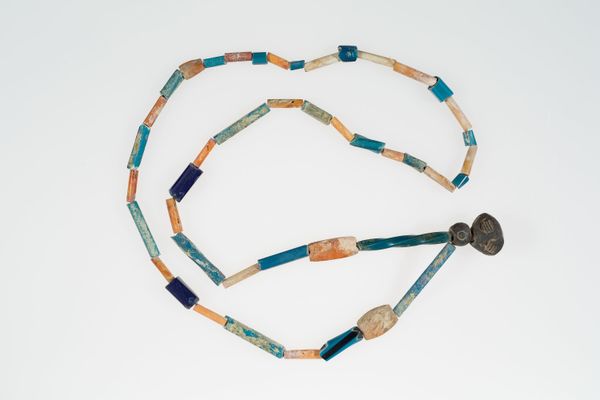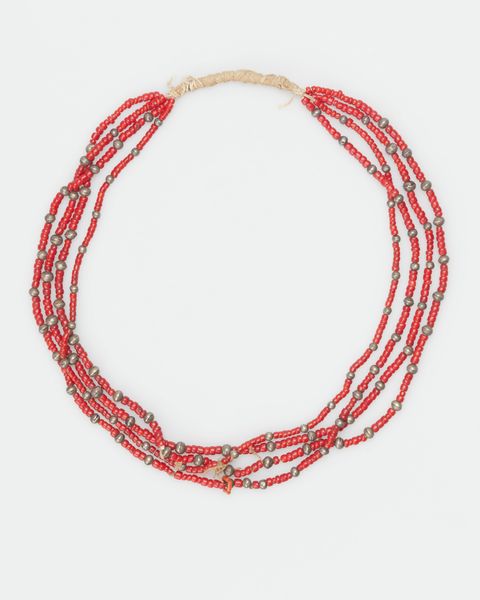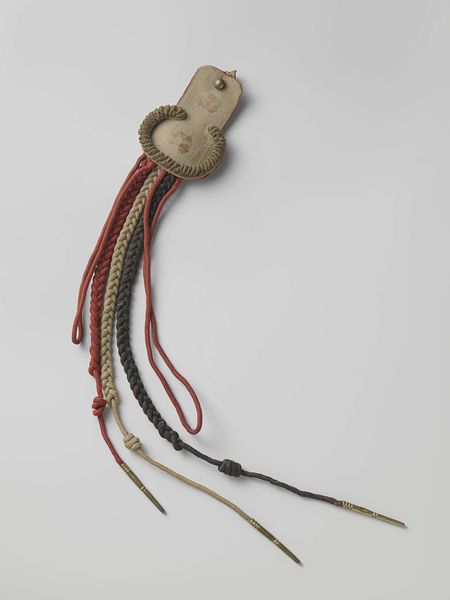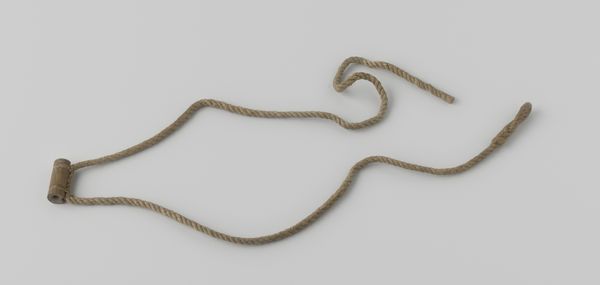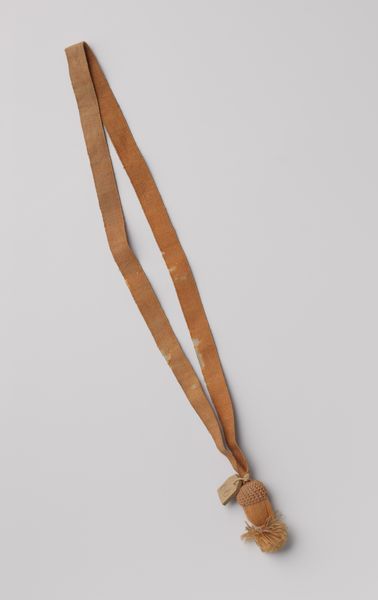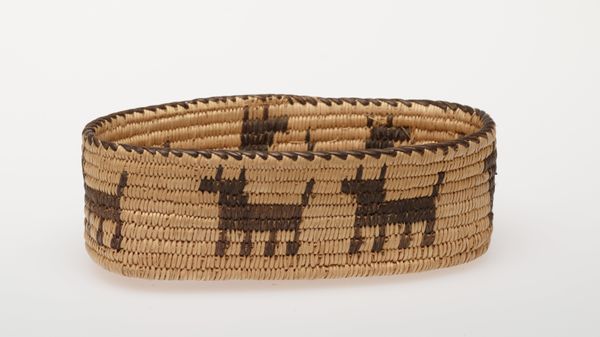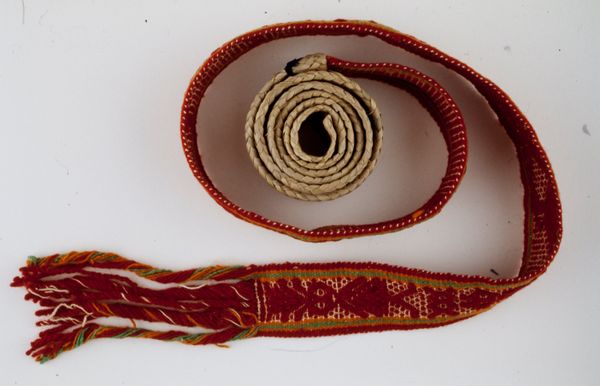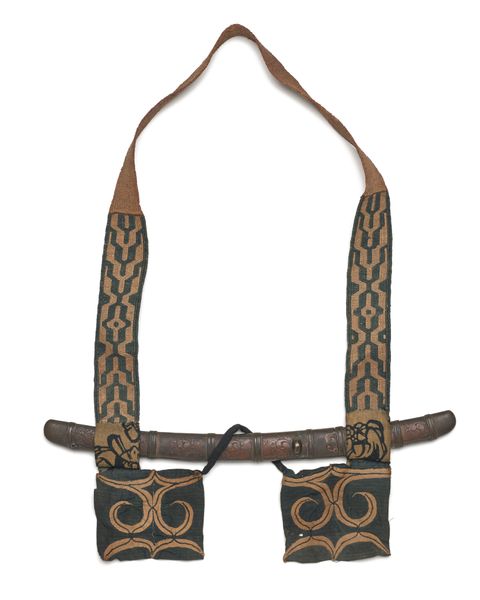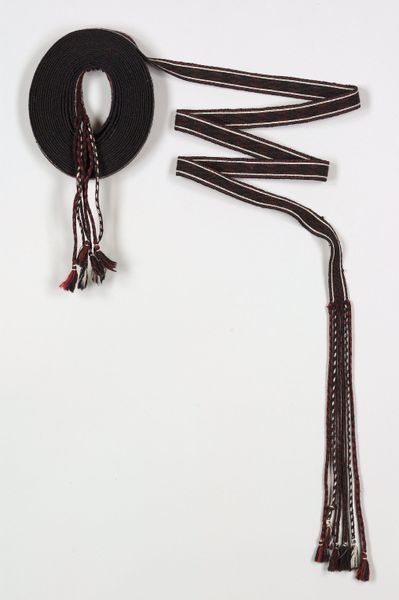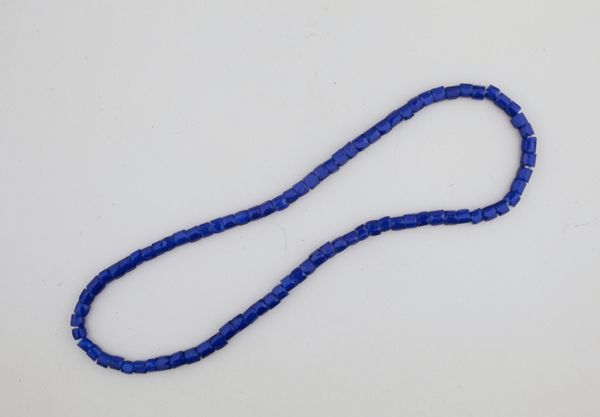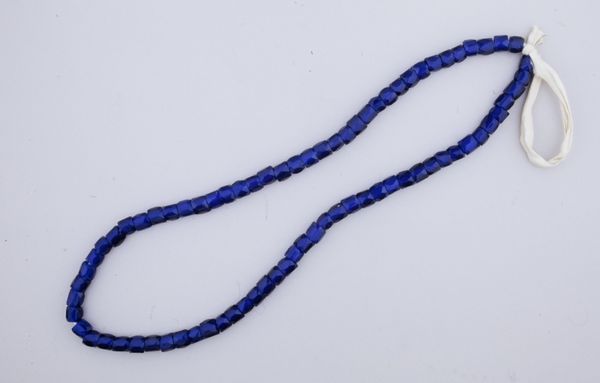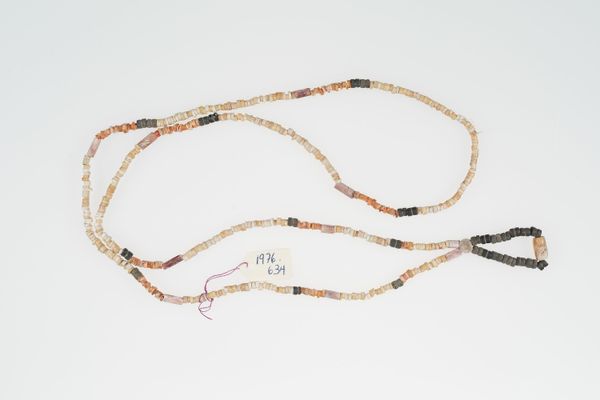
mixed-media, fibre-art, weaving, textile, cotton
#
mixed-media
#
fibre-art
#
weaving
#
textile
#
orientalism
#
cotton
Dimensions: 97 × 2 in. (246.38 × 5.08 cm)
Copyright: Public Domain
Curator: Let’s turn our attention now to a textile piece from the late 18th to early 19th century: an anonymous work held here at the Minneapolis Institute of Art entitled “Carrying strap (tara)". Editor: It strikes me as unexpectedly delicate, considering its implied use. I expected something much heavier, less refined, especially seeing that mix of materials and weaving techniques. Curator: Indeed. It's crafted using a mixed-media approach combining cotton and fibre-art practices into a unified textile whole. Look at the labour involved in processing the raw cotton into thread. And consider its cultural purpose beyond simple utility! Editor: I see the strap through the lens of its social context—as an Indigenous artwork existing on the fringes of orientalist collection practices of its time. Was it collected as an ethnographic specimen or as an artistic object? How might this impact our contemporary understanding of its value and purpose? Curator: That’s precisely where our interpretation gets interesting, isn’t it? The very act of categorizing it requires us to engage with questions of labour. How were the raw materials sourced, processed, and woven, by whom, and under what conditions? These considerations become inextricably linked. Editor: It really begs the question: What sort of burdens was it intended to bear, literally and figuratively? Was it reserved for particular members of a community? I'm intrigued by the potential power dynamics woven, quite literally, into the very fabric of this tara. Curator: The craftsmanship itself points to a significant level of skill and dedication, elevating it beyond the purely functional. Note the central band showcasing repeating geometric patterns, acting almost as a form of symbolic embellishment. It pushes the boundaries of craft, venturing into the realm of fine art. Editor: This discussion challenges us to contemplate the relationship between art, labor, and social justice and I find that perspective enriching, even when appreciating this carrying strap, while also reflecting on our own biases and the stories we choose to tell. Curator: A very fitting conclusion to my observations. Thank you.
Comments
minneapolisinstituteofart almost 2 years ago
⋮
This head strap, or tara, was used by a woman to carry heavy items, such as a small child or a bundle of firewood, on her back. The ends were tied around the item, which was then lifted and suspended by the woven band placed on her forehead. As Ainu society changed during the Meiji era (1868–1912), this type of strap lost its function in daily life; it was repurposed as a burial accessory.
Join the conversation
Join millions of artists and users on Artera today and experience the ultimate creative platform.
